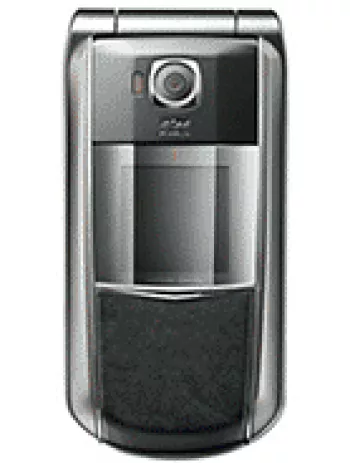
Device Overview
The Asus Transformer Book Trio is a hybrid device that combines the functionalities of a tablet and a laptop. Released in September 2013, it was a novel concept at the time, offering unique flexibility and capability. The device stands out for allowing users to run both Windows and Android operating systems, which can be switched seamlessly depending on the usage scenario. This makes it an ideal choice for users who desire the productivity of a laptop and the convenience of a tablet in a single device.
Design and Build
The Transformer Book Trio features a sleek and modern design with dimensions of 304.8 x 193 x 9.7 mm, which ensures it remains portable and easy to handle. Unfortunately, the exact weight is not specified, but the device is built for mobility, maintaining a balance between sturdiness and elegance. The shared keyboard dock and docking mechanism allows the device to transition smoothly from a tablet to a stylized laptop.
Display
Equipped with an 11.6-inch IPS LCD, the device offers vibrant and sharp visual experiences with a resolution of 1080 x 1920 pixels. The screen size makes it comfortable for both casual browsing and detailed work tasks, while the pixel density ensures clarity in displays, streaming, and other viewing activities. The display quality makes reading, viewing photos, and watching videos a pleasure.
Platform
The Transformer Book Trio operates on an Intel Atom chip, ensuring smooth operations on Android 4.2 (Jelly Bean). Though Android 4.2 is not the latest version, it provides a stable and user-friendly interface suitable for most applications. Notably, the device allows switching between Android and a Windows-based system when docked, thus enhancing productivity scenarios significantly. This dual-OS feature makes it a versatile tool for multitasking.
Memory
Storage options include 16GB, 32GB, and 64GB, coupled with 2GB of RAM. Though modest by today's standards, it was sufficient at the time for basic multitasking and storing essential data. For users needing more storage, a dedicated microSDXC card slot is available to expand the device's storage capacity and to accommodate more applications, media, and data.
Camera
For photography needs, the device is fitted with a 5 MP rear camera capable of autofocus and capturing videos at 1080p@30fps, while the 1.2 MP front camera is suitable for video calls and basic selfies with 720p video recording capability. These features are decent for everyday photography and connectivity tasks.
Connectivity and Sensors
The Trio offers a solid range of connectivity options including Wi-Fi 802.11 b/g/n, Bluetooth 3.0, and Micro USB 2.0. Though it lacks options like cellular connectivity and GPS, these omissions are mitigated by its versatility as a hybrid device. The sound system includes a loudspeaker and a 3.5mm headphone jack for better accessibility in multimedia usage. As for sensors, it incorporates an accelerometer, gyro, and compass to enhance functional versatility.
Battery and Performance
While the specific battery capacity isn’t clearly detailed, the device incorporates a Li-Po (19 Wh) battery adequate to support various tasks and usage patterns for a hybrid device of its time. The battery life offered enough use time for both tablet browsing and professional tasks. The performance of the device is propped up by the Intel Atom processor, rendering it capable of handling most essential and some advanced computing tasks efficiently.
Conclusion
The Asus Transformer Book Trio represents an inventive take on hybrid technology from its time, doubling functionality with both tablet and laptop attributes, aiming at maximizing both productivity and convenience. While the specifications may not compete with modern high-end devices, its dual-operating system function and adaptability continue to make it an interesting option for users seeking both operating systems within a single device. Although discontinued, it remains a distinctive representation of the advanced technology approach Asus was steering during the early 2010s.
Main Features of Asus Transformer Book Trio
- Hybrid device with dual functionality: Acts as a tablet and a laptop.
- IPS LCD display for wide viewing angles.
- 11.6-inch screen size with a Full HD resolution of 1080 x 1920 pixels.
- Powered by Intel Atom chipset for efficient performance.
- Comes with multiple storage options: 16GB, 32GB, or 64GB with 2GB RAM.
- Expandable storage via a dedicated microSDXC slot.
- 5 MP main camera capable of recording 1080p videos at 30fps.
- Loudspeaker with 3.5mm audio jack for versatile audio options.
- Equipped with basic sensors like accelerometer, gyro, and compass.
- Wi-Fi connectivity with hotspot capability.
Disadvantages of Asus Transformer Book Trio
- No cellular connectivity
- Discontinued status
- Lacks SIM card support
- Relatively low screen-to-body ratio (~63.1%)
- Outdated Android OS version (Android 4.2 Jelly Bean)
- Limited RAM (2GB)
- Low internal storage options (up to 64GB)
- Basic camera specifications (5 MP main, 1.2 MP selfie)
- No GPS positioning support
- No NFC or Radio functionality
- Older Bluetooth version (3.0)


View Also
More Phones
All Rights Reserved +14267 Phones © Mobilawy 2025

























